At our latest Ventilation Symposium, the theme was “lung protection for every patient”. The event was held in collaboration with Hamilton Medical and brought together clinicians from across the Nordics to learn and share knowledge.
The experienced speakers approach the theme from several perspectives, including lung recruitment methods, esophageal pressure measurement, and training in advanced monitoring. Watch the talks and discussions and get inspired with ways to optimize the ventilation practice in your own department. You can find all the recordings here. Read more about each talk below to get an overview of content and key points.
Lung-protective ventilation in passive patients
Petra Rietveld, Ventilation Practitioner and ICU nurse at Leiden University Medical Center, kicks off the symposium. In her talk about lung-protective ventilation in passive patients she talks about the rationale for using lung protection and puts emphasis on different ventilation variables such as tidal volume, plateau pressure and peak pressure, and their differences.
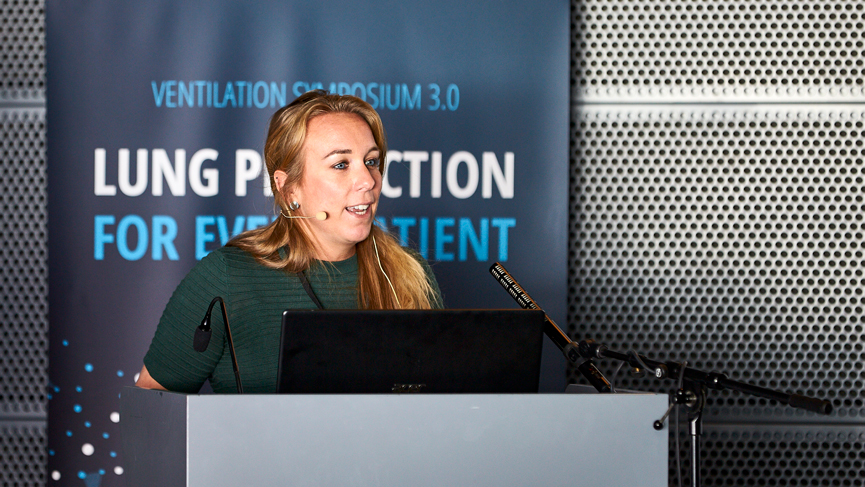
Petra Rietveld
In order to prevent VILI it is important to understand and measure the pressures administered to the respiratory system, Petra emphasizes. She also explains why driving pressure is the main variable when working with lung-protective ventilation.
Watch the talk: Lung-protective ventilation in passive patients.
Assessing recruitability and recruiting the lung
Dr. Med. Jean-Michel Arnal, Senior Intensivist at Saint Mousse Hospital, talks about how to assess lung-recruitability and different recruitment methods.
Among other things, Jean-Michel explains why PEEP should not be used to recruit the lung but should be used to prevent derecruitment after a recruitment maneuver. Jean-Michel also points out that a recruitment strategy should be considered early on in the treatment of ARDS patients, but that it is very important not to apply a recruitment strategy for all ARDS patients, as it can have adverse effects and increase the risk of VILI rather than decrease it.
Watch the talk: Assessing recruitability and recruiting the lung.
Panel discussion – Esophageal pressure measurement
Moderator: Dr. Med. Jean-Michel Arnal, Senior Intensivist at Saint Mousse Hospital.
Panel of experts: Dr. Vegard Tørå Dokka, Senior Intensivist at Sørlandet Hospital Arendal, Dr. Søren Aagaard, Senior Intensivist at Aalborg University Hospital, Willem Snoep, Ventilation Practitioner at Leiden University Medical Center, and Dr. Med. Bram Schoe, Senior Intensivist at Leiden University Medical Center.
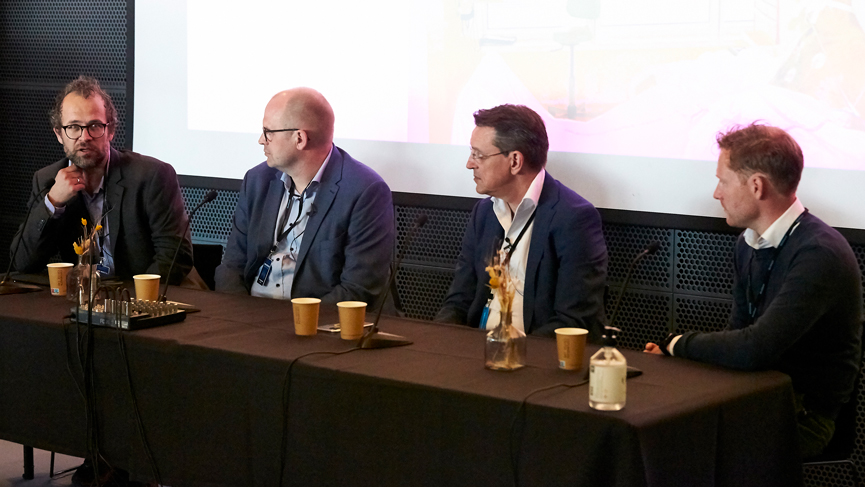
Vegard Tørå Dokka, Søren Aagaard, Bram Schoe and Willem Snoep
In the panel discussion about esophageal pressure management four ventilation experts share their experiences with the practice and the audience asks questions along the way. The talk is moderated by Jean-Michel who steers the discussion through a series of themes, such as what catheters to use and how to place them, and how to verify measurements. We can reveal that the panelists bring different use cases to the table, and that not all of them use the same catheters and inflate the balloon in the same way.
Watch the panel discussion: Esophageal pressure measurement.
Esophageal pressure in passive patients
Dr. Franciska van der Velde, Senior Intensivist from Leiden University Medical Center, talks about esophageal pressure in passive patients. Franciska provides an overview of recent and relevant papers on esophageal pressure measurements and then ideas on how the esophageal balloon is used in clinical practice.
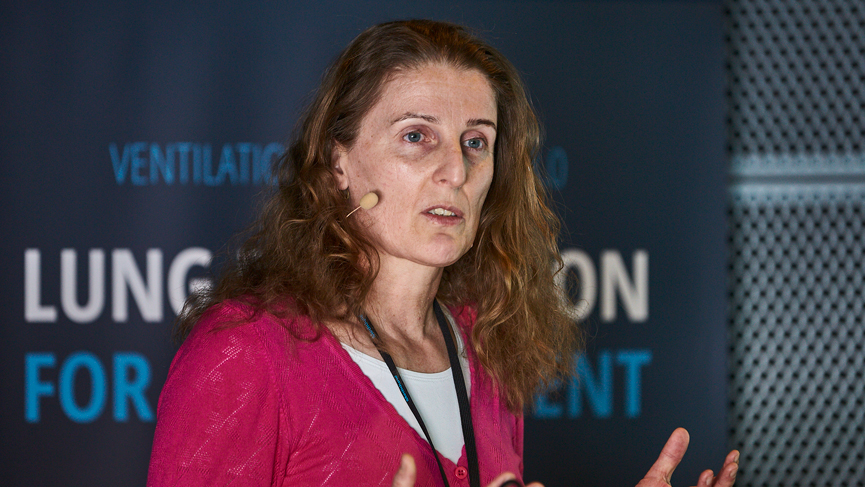
Franciska van der Velde
Franciska includes specific examples from her own experience with different clinical scenarios and different patients: E.g., a 48-year-old patient with influenza A, a 75-year-old COVID patient, and a 29-year-old patient with a BMI of 45.
To summarize, Franciska explains that in her team they use esophageal pressure to guide the mechanical ventilation and find it very useful to detect asynchronies.
Watch the talk: Esophageal pressure in passive patients.
PES in assisted mechanical ventilation part 1
Dr. Med. Bram Schoe, Senior Intensivist from Leiden University Medical Center, talks about esophageal pressure (PES) in assisted mechanical ventilation, which is less researched than controlled ventilation.
Bram goes through what happens in assisted ventilation, what and how to monitor, how to manage the patient, safe tidal volume and driving pressure and how to monitor asynchronies.
Bram concludes the talk with four key takeaways: (1) Lung injury in assisted mechanical ventilation exists but evidence is scarce, (2) driving pressure and compliance are associated with mortality, (3) lung injury is associated with effort, and (4) monitoring effort, driving pressure and asynchronies is difficult.
Watch the talk: PES in assisted mechanical ventilation part 1.
PES in assisted mechanical ventilation part 2
In the second part of his talk, Dr. Med. Bram Schoe shares his practice and experience with using esophageal pressure in assisted mechanical ventilation.
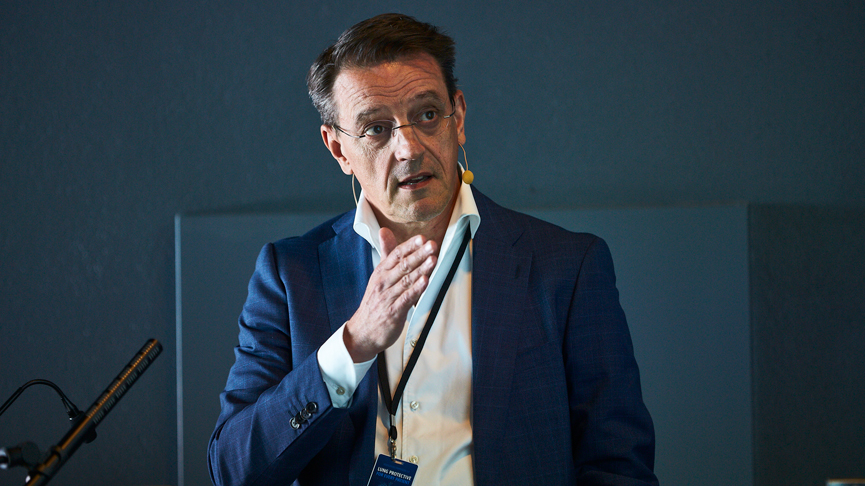
Bram Schoe
Bram talks about what happens with esophageal pressure in assisted ventilation, monitoring curves, transpulmonary pressure swings, patient effort and more. In the area of transpulmonary pressure swings, Bram points out studies are needed: It is known that large differences are harmful because they account for stress and strain of the lungs, but no upper limit is defined. Watch the talk for the full discussion where Bram also suggests what a safe maximum might be.
The talk includes a lot of interesting examples, in which it is difficult to identify exactly what is happening between patient and ventilator, e.g., double trigger or reverse trigger – examples in which a PES catheter can provide you with the needed insight.
Watch the talk: PES in assisted mechanical ventilation part 2.
Training the ICU on advanced monitoring
Franciska van der Velde and Willem Snoep from Leiden University Medical Center share their experiences and top advice for training an ICU in advanced monitoring, and how to make lung protection and advanced monitoring a daily practice.
A key point Franciska and Willem makes is that monitoring is a philosophy: You need to adjust your whole way of thinking and people and processes need to be adapted. Training and knowledge-sharing is key in this regard, Franciska and Willem explain: They use a combination of lectures and bedside teaching, have in-depth courses for ICU nurses, and have also formed a ventilation working group. To support colleagues in their daily work, reference cards for bedside use have been made as well as a patient data management system to help with advanced monitoring. To conclude the talk, Franciska and Willem emphasize that training must be a continuous activity, both as new colleagues arrive and to maintain knowledge with current staff.
Watch the talk: Training the ICU team on advanced monitoring.
Closed loop-ventilation and lung protection
Dr. Med. Jean-Michel Arnal shares his experience with closed-loop ventilation and lung protection. The talk includes the use of the Hamilton features ASV and INTELLiVENT-ASV for lung protection and advice on what to monitor when applying lung protection.
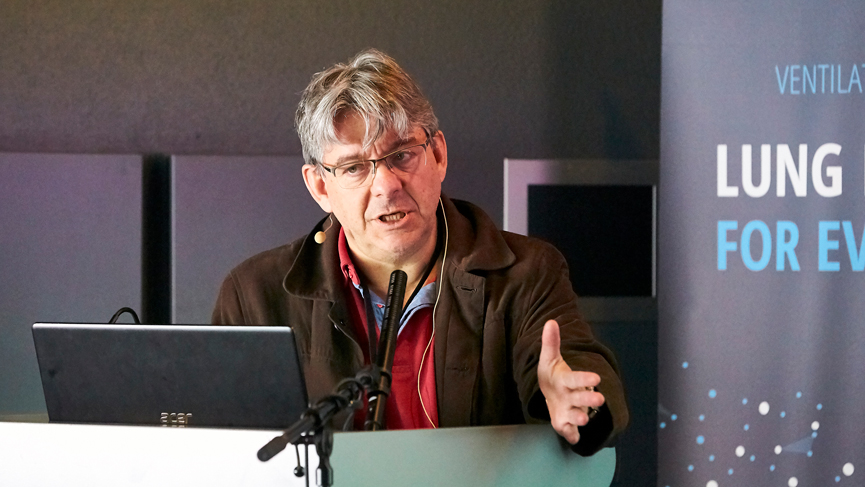
Jean-Michel Arnal
As it was also pointed out earlier in the day, Jean-Michel stresses that driving pressure is associated with negative outcomes and is a very important factor when trying to prevent VILI. Here INTELLiVENT-ASV can be a great help, as it can automatically keep variables, e.g., driving pressure, in the recommended range.
Watch the talk: Closed-loop ventilation and lung protection.
Take home messages and conclusions
Dr. Med. Bram Schoe, Senior Intensivist at Leiden University Medical Center, rounds off the day with a summary of the key messages shared throughout the symposium. In addition, Bram shares the learnings from the ventilation journey that he and his team have been on. Their experience is that you get better ventilation when you invest in ventilation, make protocols, and simplify ventilation modes. However, the most important message, Bram says, is simply to use the available tools and go through things you do not understand – then you will learn a lot about ventilation.
Watch the take home messages and conclusions.
If lung-protective ventilation is something you are interested in, then you might like to read our article about individualized ventilation. You can also subscribe to our newsletter, which has a segment about critical care with great emphasis on respiratory care. Then you will be notified next time we are organizing ventilation symposium or other relevant events.




